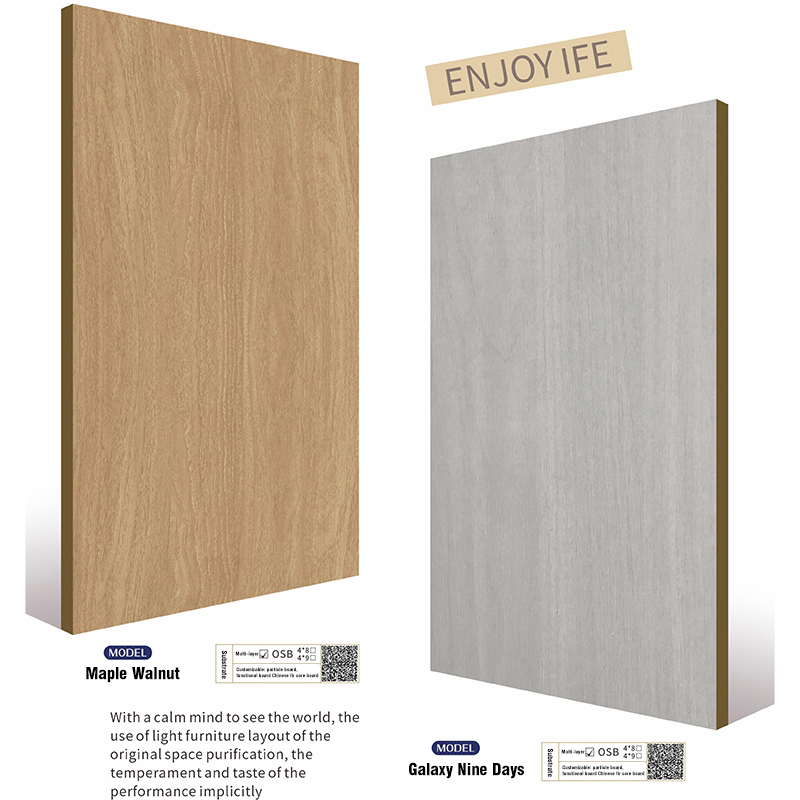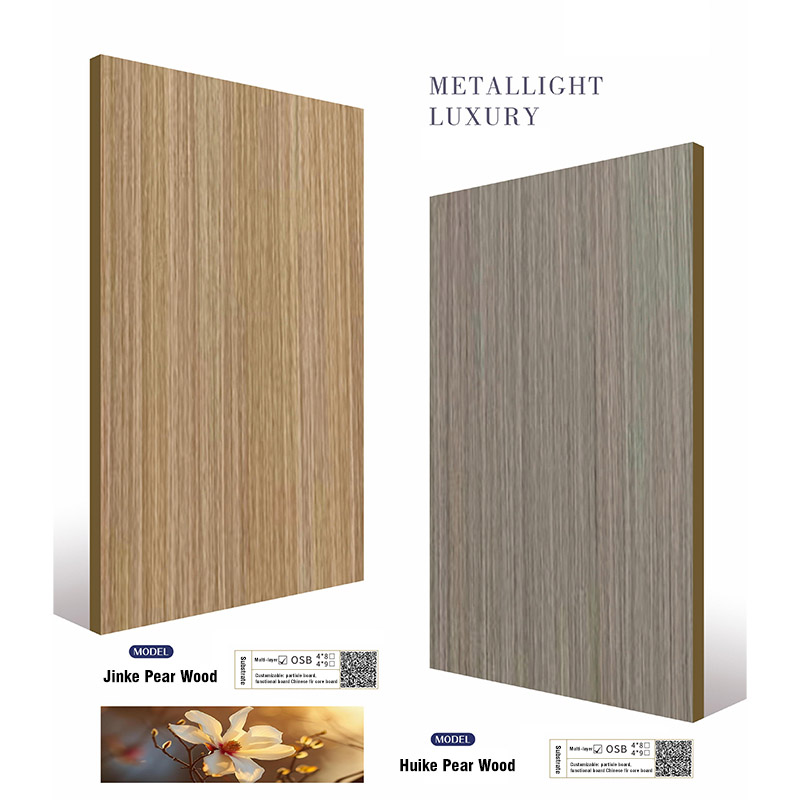What environmental factors affect the shrinkage rate of walnut board base material?
Release Time : 2025-11-19
The shrinkage rate of walnut board base material is significantly affected by environmental factors, with temperature and humidity changes, airflow patterns, and light conditions being the core variables. These factors directly affect the cellular structure by altering the distribution and balance of moisture within the wood, thus influencing the stability of shrinkage behavior.
Temperature and humidity fluctuations are the primary factor affecting the shrinkage rate of walnut board base material. When ambient humidity increases, wood cell walls absorb moisture from the air, causing cell cavities to expand and increase in volume; conversely, when humidity decreases, moisture is released from the cell walls, causing cell cavities to shrink and decrease in volume. Frequent occurrences of this moisture absorption and desorption process can lead to repeated expansion and contraction of the wood, resulting in decreased dimensional stability. For example, in areas with seasonal transitions or large diurnal temperature variations, walnut board base material may experience cracking and warping due to drastic humidity changes. Furthermore, the effect of temperature on the moisture activity of the wood cannot be ignored: high temperatures accelerate moisture evaporation, allowing the wood to dry faster, but uneven drying can cause localized differences in shrinkage rates, leading to stress concentration.
Airflow patterns indirectly regulate the shrinkage rate by affecting the rate of moisture evaporation from the wood surface. In well-ventilated environments, surface moisture in walnut board base material evaporates quickly. If the internal moisture migration rate cannot match this, a "dry surface, wet interior" state can easily occur, leading to excessive surface shrinkage and insufficient internal shrinkage, ultimately causing deformation. For example, wood in open storage rooms or near ventilation openings often develops end cracks or surface hardening due to rapid airflow. Conversely, in enclosed or poorly ventilated environments, wood moisture evaporates slowly, and the shrinkage process is more uniform. However, if exposed to high humidity for a prolonged period, excessive moisture absorption can lead to expansion and deformation.
The effect of light conditions on the shrinkage rate of walnut board base material is often overlooked, but its role should not be underestimated. Ultraviolet radiation damages the lignin on the wood surface, reducing the mechanical strength of the cell walls and making the wood more susceptible to shrinkage due to moisture changes. Simultaneously, the thermal effect of light accelerates the evaporation of internal moisture, exacerbating uneven shrinkage. For example, walnut furniture exposed to sunlight for extended periods may exhibit different shrinkage rates on the sun-facing and shaded sides due to differences in light intensity, leading to structural distortion. Furthermore, light can also cause color changes in the wood, further affecting its appearance stability.
Temperature, humidity, airflow, and light do not act in isolation but interact in complex ways to influence shrinkage rates. For example, high temperature and humidity accelerate moisture absorption and expansion in wood, but if accompanied by strong sunlight, surface moisture evaporates too quickly, potentially causing an abnormal phenomenon of "external expansion and internal shrinkage." Conversely, while low temperature and dry environments inhibit moisture absorption, poor airflow hinders the migration of moisture within the wood, leading to delayed shrinkage. This multi-factor coupling makes the shrinkage behavior of walnut board base material unpredictable under different environments, necessitating comprehensive control of environmental parameters to optimize its stability.
To reduce the impact of environmental factors on the shrinkage rate of walnut board base material, targeted control measures can be implemented. For temperature and humidity management, constant temperature and humidity environments can be maintained using air conditioners and dehumidifiers to avoid drastic humidity fluctuations. For airflow control, enclosed storage spaces or the use of windbreaks can reduce direct airflow. For light protection, sunshades and UV filters can reduce direct UV radiation, or furniture placement can be adjusted regularly to balance sunlight exposure. In addition, selecting scientifically dried walnut board base material to ensure that its moisture content matches the equilibrium moisture content of the environment in which it is used is also key to improving dimensional stability.







